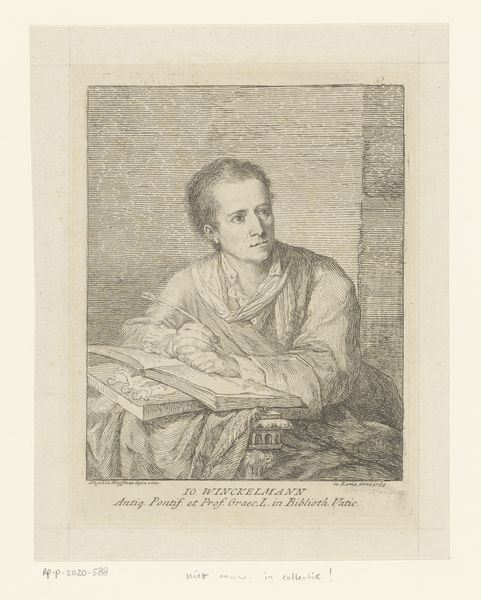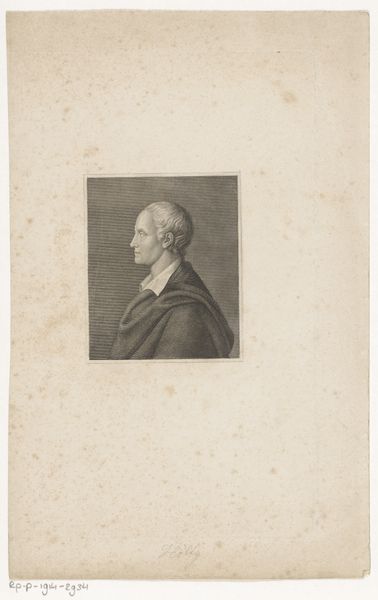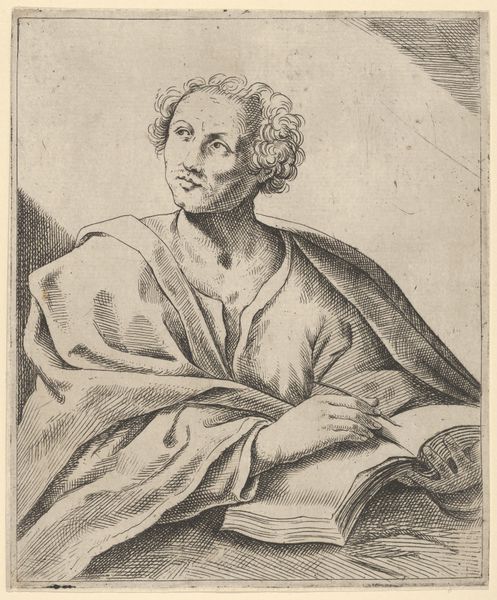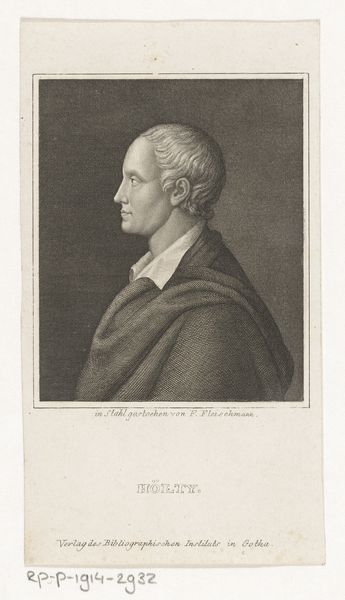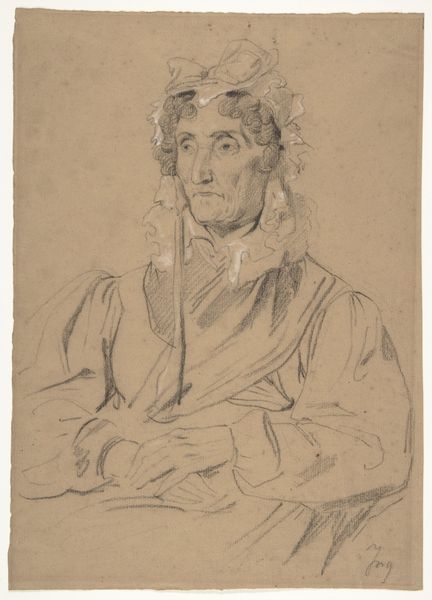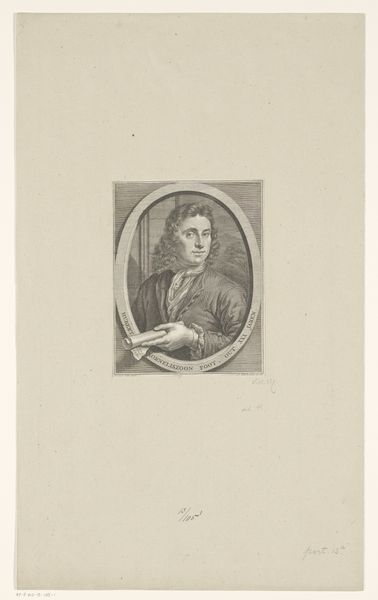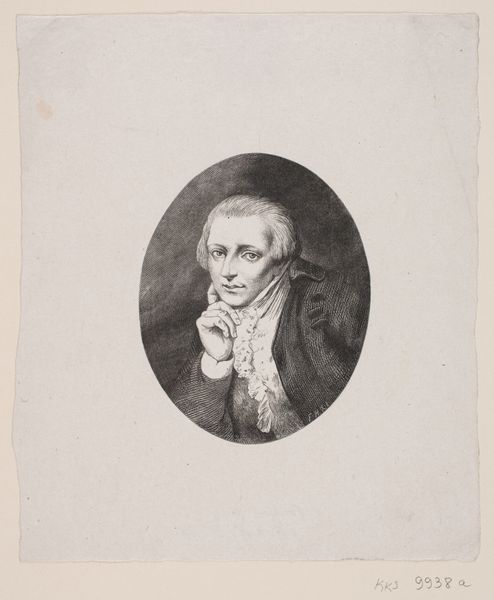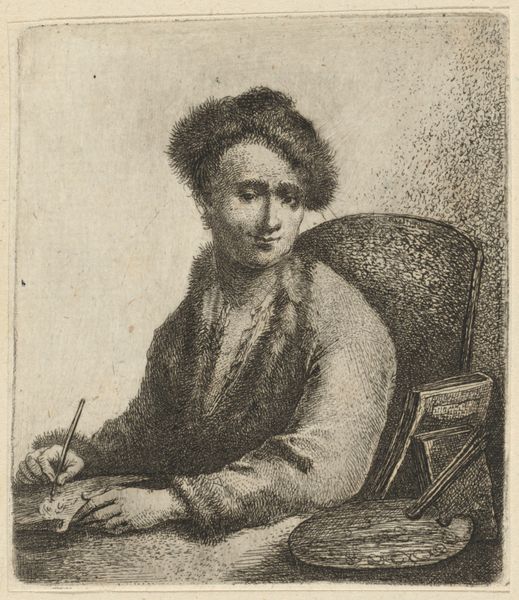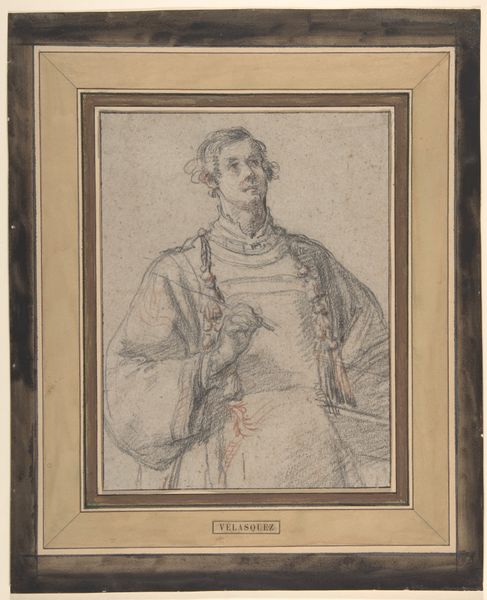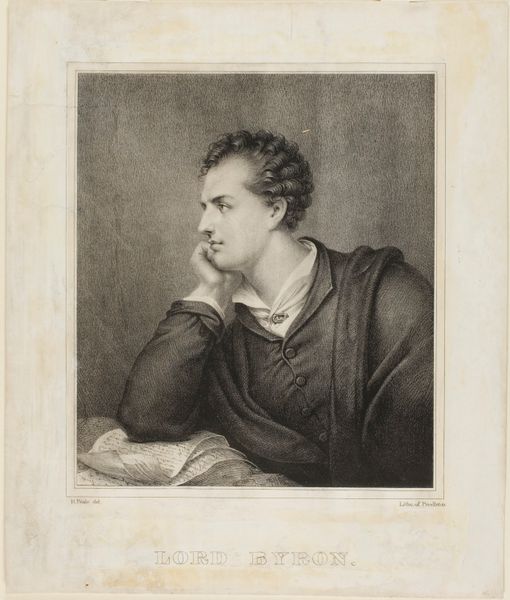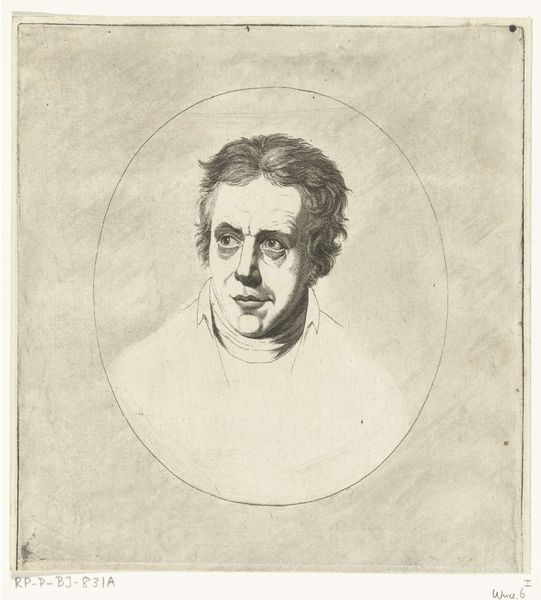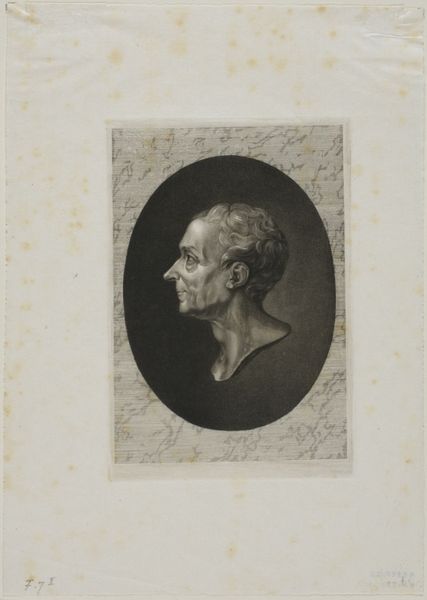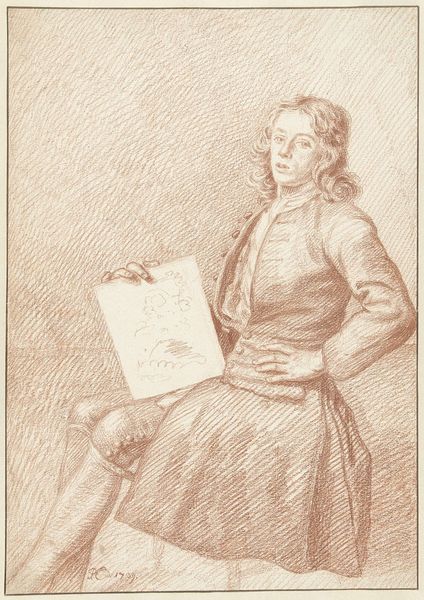
print, engraving
#
neoclacissism
# print
#
portrait drawing
#
history-painting
#
engraving
Dimensions: plate: 21.6 x 15.9 cm (8 1/2 x 6 1/4 in.) sheet: 52.3 x 36.3 cm (20 9/16 x 14 5/16 in.)
Copyright: National Gallery of Art: CC0 1.0
Curator: This delicate engraving, "Johann Winckelmann," possibly dating between 1764 and 1780, presents a thoughtful depiction of the famous art historian. Angelica Kauffmann is credited with the original drawing, which was then reproduced as a print. What’s your initial reaction to this portrait? Editor: Immediately, I’m struck by Winckelmann’s gaze, seemingly directed away from the viewer, suggesting perhaps a focus on intellectual pursuits rather than engagement with the external world. He looks so distant and caught up in something that remains undisclosed to us. It prompts reflection on the social pressures impacting male scholars of the time, where internalized oppression or other limitations, even under the auspices of 'art', remain hidden, or in this case averted from a head-on point of view. Curator: The medium, engraving, is important here. Think about the labour involved – the meticulous carving into a metal plate, the multiple impressions that could then circulate, making Winckelmann's image widely accessible. It was a way of disseminating knowledge and celebrating intellectual figures, essentially a manufacturing process for the circulation of ideas and celebrity. The texture alone created from the engraver’s mark making generates tone and depth that would require multiple steps or hand drawings if created at full-scale. Editor: Indeed, that accessibility is key. How often are the contributions of figures, particularly outside the traditional artistic sphere, properly recognized? Winckelmann's presence here, preserved through Kauffmann's artistic skill and then reproduced and spread using this print-making technique, really underscores the historical valuation of certain men of thought during this period of neoclassicism while so many others have gone unseen or undocumented in broader histories. What choices were behind the labor and material decisions that favored this particular subject in comparison to a wider representation? Curator: I agree. The distribution via print fostered a community of thinkers, but we must recognize the systems that elevated figures such as Winckelmann above the anonymous artisans who likely contributed to the creation of antiquities and cultural knowledge upon which figures such as Winckelmann predicated their reputation. Editor: It encourages us to question those power structures of the time. Who was valued, who was seen and who was ultimately deemed disposable to progress at the time and to really interrogate it all. Curator: Absolutely, and in examining those complex narratives, we gain a far richer understanding of the art, the artist, and society itself. Editor: Right. A good reminder to maintain healthy scrutiny on our established figures!
Comments
No comments
Be the first to comment and join the conversation on the ultimate creative platform.
